Welcome to the Amira-Avizo Software Use Case Gallery
Below you will find a collection of use cases of our 3D data visualization and analysis software. These use cases include scientific publications, articles, papers, posters, presentations or even videos that show how Amira-Avizo Software is used to address various scientific and industrial research topics.
Use the Domain selector to filter by main application area, and use the Search box to enter keywords related to specific topics you are interested in.
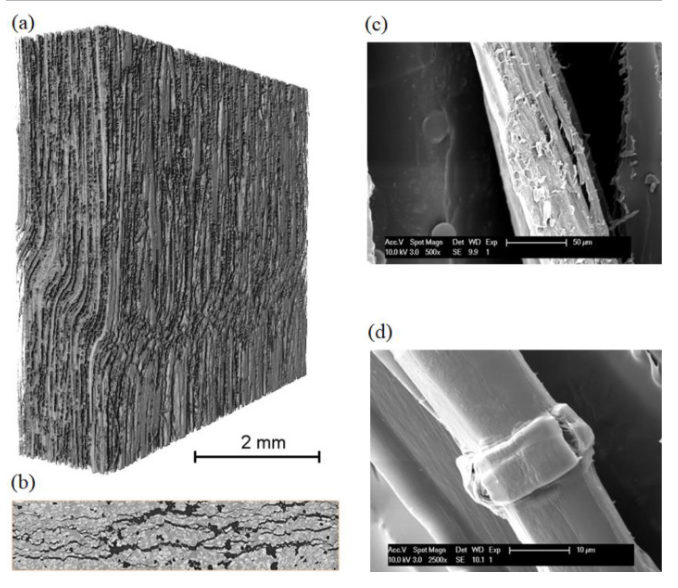
In this study, the researchers investigated the compressive failure mechanisms in flax fiber composites, a promising eco-friendly alternative to synthetic composite materials, through both numerical simulations and experimental analysis. They examined the reasons behind the low compressive strength in comparison to tensile strength, focusing on the compressive-to-tensile strength ratio. A novel thermodynamically consistent continuum damage micromechanics model was introduced to capture the ev... Read more
Vedad Tojaga, Alexandros Prapavesis, Jonas Faleskog, T. Christian Gasser, Aart W. van Vuure, Sören Östlund

The research focuses on the fiber behavior following injection molding on a spiral-flow mold, particularly its fiber orientation behavior. The behavior of the glass fiber will be examined by altering key experiment settings, the screw speed and the back pressure, and employing different melt paths. The results show that the application of high back pressure and high screw speed decreased the fiber length but successfully increased the fiber orientation average to the flow direction. The desig... Read more
Ahmad Hafizh Ridho, Feng-Jung Cheng, Sheng-Jye Hwang
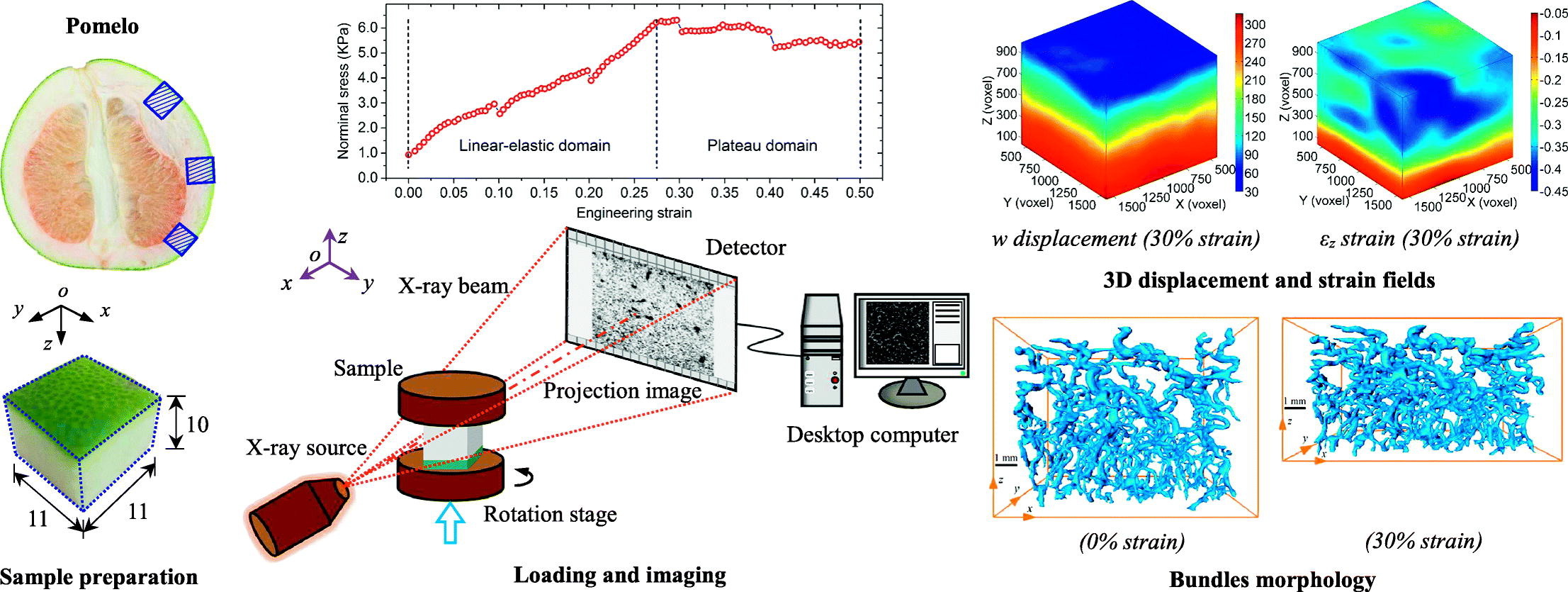
Among natural cellular materials, pomelo peels, having a foam-like hierarchical microstructure, represent an ideal model for developing materials with high energy absorption efficiency. In this work, by combining X-ray tomographic imaging technique and digital volume correlation (DVC), in-situ stepwise uniaxial compression tests were performed to quantify the internal morphological evolution and kinematic responses of pomelo peel samples during compression.
Read more
B.Wang, B.Pan, G.Lubineau
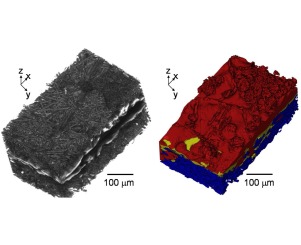
Investigation of Hot Pressed Polymer Electrolyte Fuel Cell Assemblies via X-ray Computed Tomography
The hot pressing process for fabricating membrane electrode assemblies (MEAs) has been widely adopted, yet little is known of its effects on the microstructural properties of the different components of the MEA. In particular, the interaction of the electrolyte, electrode and gas diffusion layer (GDL) due to lamination is difficult to probe as conventional imaging techniques cannot access the internal structure of the MEA. Here, a novel approach is used, which combines characterisation of hot... Read more
Q. Meyer, N. Mansor, F. Iacoviello, P.L. Cullen, R. Jervis, D. Finegan, C. Tan, J. Bailey, P. R. Shearing, D. J. L. Brett
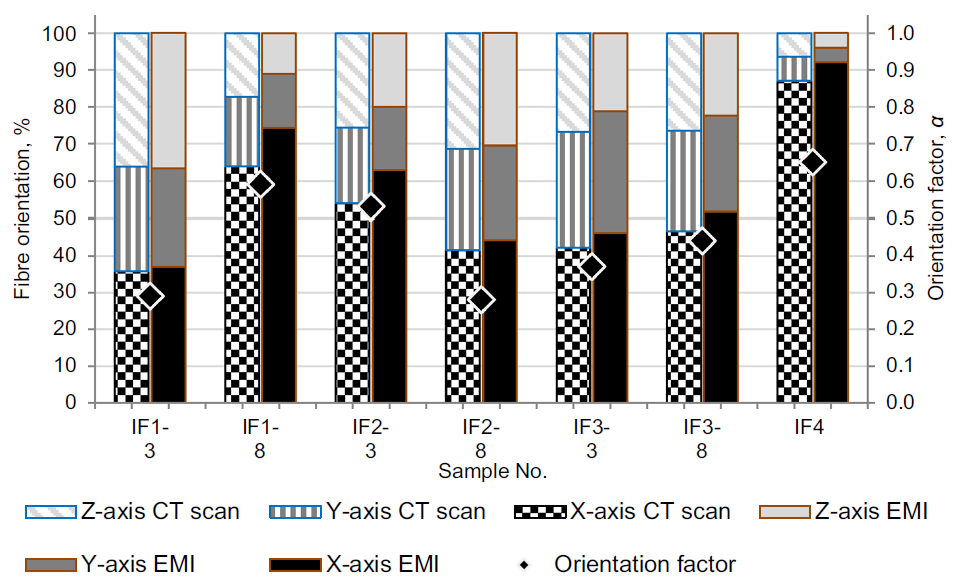
The interest in potential applications produced with self-compacting fibre reinforced concrete continues to grow, but in practice, problems associated with an uneven distribution and orientation of fibres in the concrete structure occur. It is not clear what exactly influences uneven distribution of fibres in selfcompacting concrete (SCC) mixtures, especially during the casting and how different factors influence fibre orientation. The objective of this work was to investigate how rheological... Read more
Elena Jasiuniene, Vaidotas Cicenas, Paulius Grigaliunas, Zymantas Rudzionis, Arunas Aleksandras Navickas
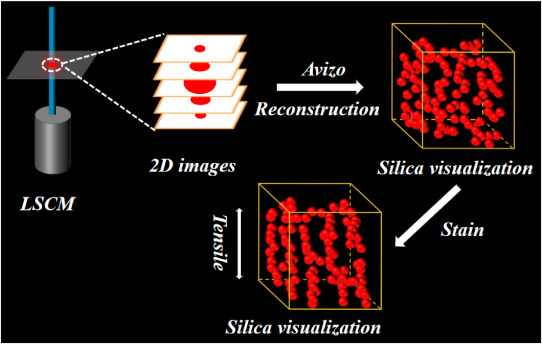
For organic-inorganic composite materials, the spatial dispersion of inorganic fillers in the organic matrix is of great significance for designing and manufacturing high-performance composite materials. To improve the understanding of the micro-physical mechanism of the filler-reinforced polymer matrix, we studied the relationship between filler network structure and macro-mechanical properties of silicone rubber by using fluorescent labeling technology and three-dimensional (3D) visualizati... Read more
Shangjun Zeng, Ming Kang, Kexu Chen, Rong Sun, Ai Lu, Guanjun Changa
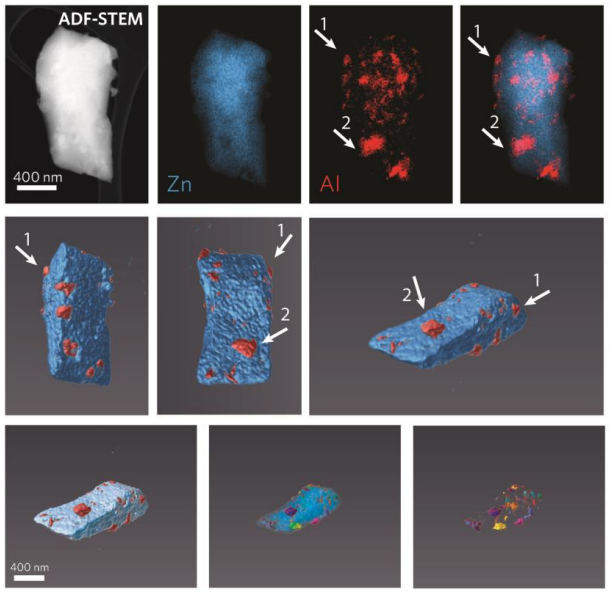
Metal-Organic Framework Crystal-Glass Composites
The majority of research into metal-organic frameworks (MOFs) focuses on their crystalline nature. However, in recent research the vitrification of a number of MOFs has been revealed. We propose that the solid-liquid phase transitions involved in MOF-glass formation can provide unique opportunities for the creation of a new class of functional, stable and porous composite materials. Described herein is the design, synthesis, and characterisation of novel metal-organic framework (MOF) crystal-... Read more
Jingwei Hou, Christopher W. Ashling, Sean M. Collins, Andraž Krajnc, Chao Zhou, Louis Longley, Duncan N. Johnstone, Philip A. Chater, Shichun Li, François-Xavier Coudert, David A. Keen, Paul A. Midgley, Gregor Mali, Vicki Chen, Thomas Bennett
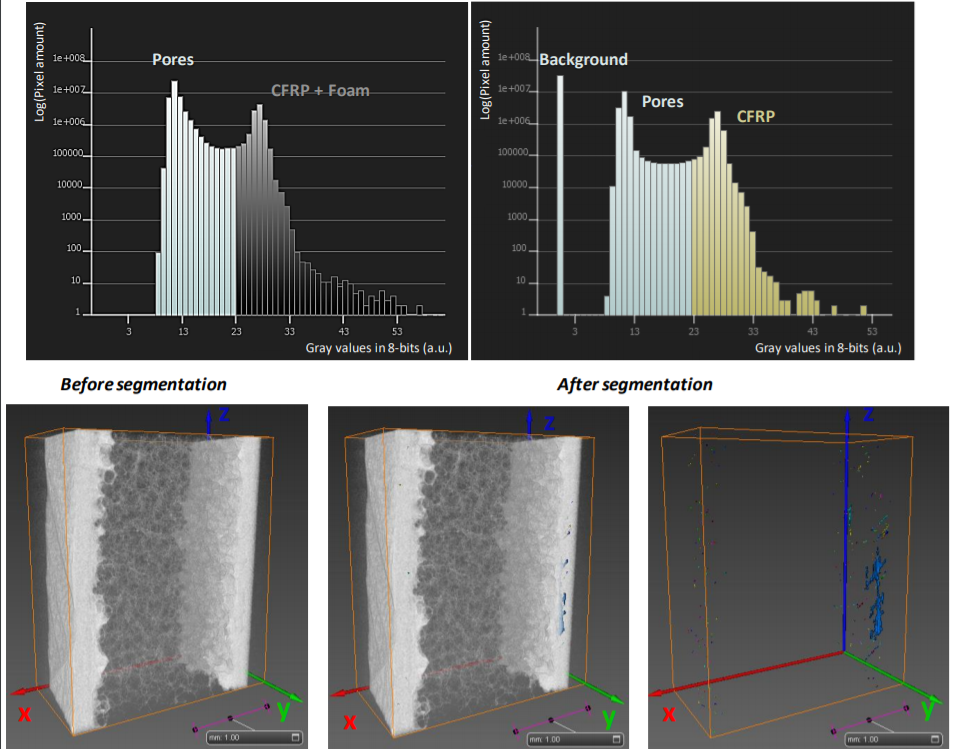
The aim of the current study is to propose a versatile, non-destructive inspection strategy to evaluate the structure of two different aircraft carbon fibre reinforced polymer (CFRP) -based composite configurations, which are widely used for structural elements, respectively layered composite and sandwich structure. X-ray computed tomography (CT) has been used as a flexible method for assessment of porosity levels in CFRP components in both types of configuration, permitting to investigate th... Read more
Elena Dilonardo, Michele Nacucchi, Fabio De Pascalis, Mauro Zarrelli, Cinzia Giannini
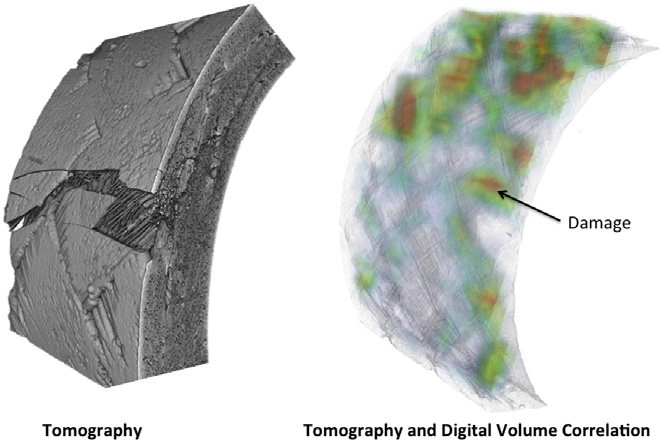
In situ observation of mechanical damage within a SiC-SiC ceramic matrix composite
SiC-SiC ceramic matrix composites are candidate materials for fuel cladding in Generation IV nuclear fission reactors and as accident tolerant fuel clad in current generation plant.
Experimental methods are needed that can detect and quantify the development of mechanical damage, to support modelling and qualification tests for these critical components. In situ observations of damage development have been obtained of tensile and C-ring mechanical test specimens of a braided nuclear gr... Read more
L. Saucedo-Mora, T. Lowe, S. Zhao, P.D. Lee, P.M. Mummery, T.J. Marrow
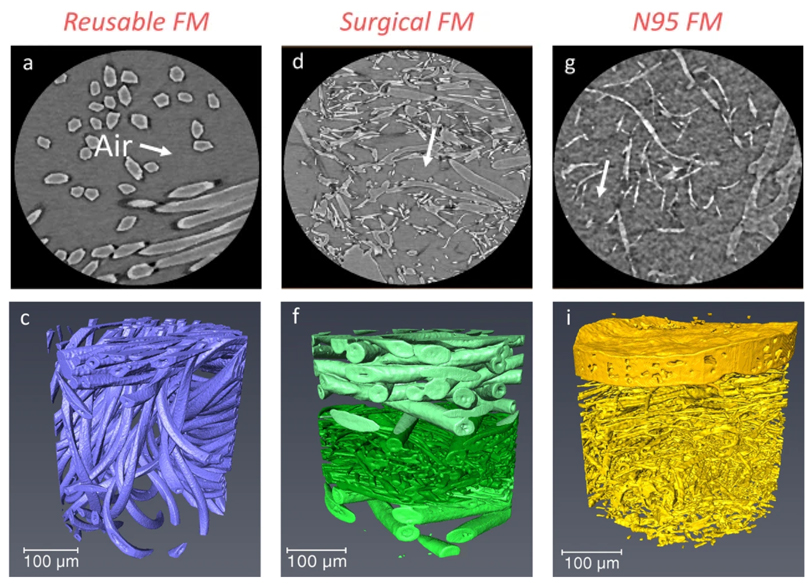
Microstructure analysis and image-based modelling of face masks for COVID-19 virus protection
Until March 2021, around 120 million coronavirus disease (COVID-19) infected cases and over 2.6 million deaths have been reported worldwide. […] Recent investigations have implied that face masks help to reduce the disease transmission and therefore slow down the growth of the epidemic curve. However, there are still ongoing debates on the efficacy of wearing masks […] since there is a general lack of information relating to the material structure of commonly used face masks.Read more
Wenjia Du, Francesco Iacoviello, Tacson Fernandez, Rui Loureiro, Daniel J. L. Brett & Paul R. Shearing
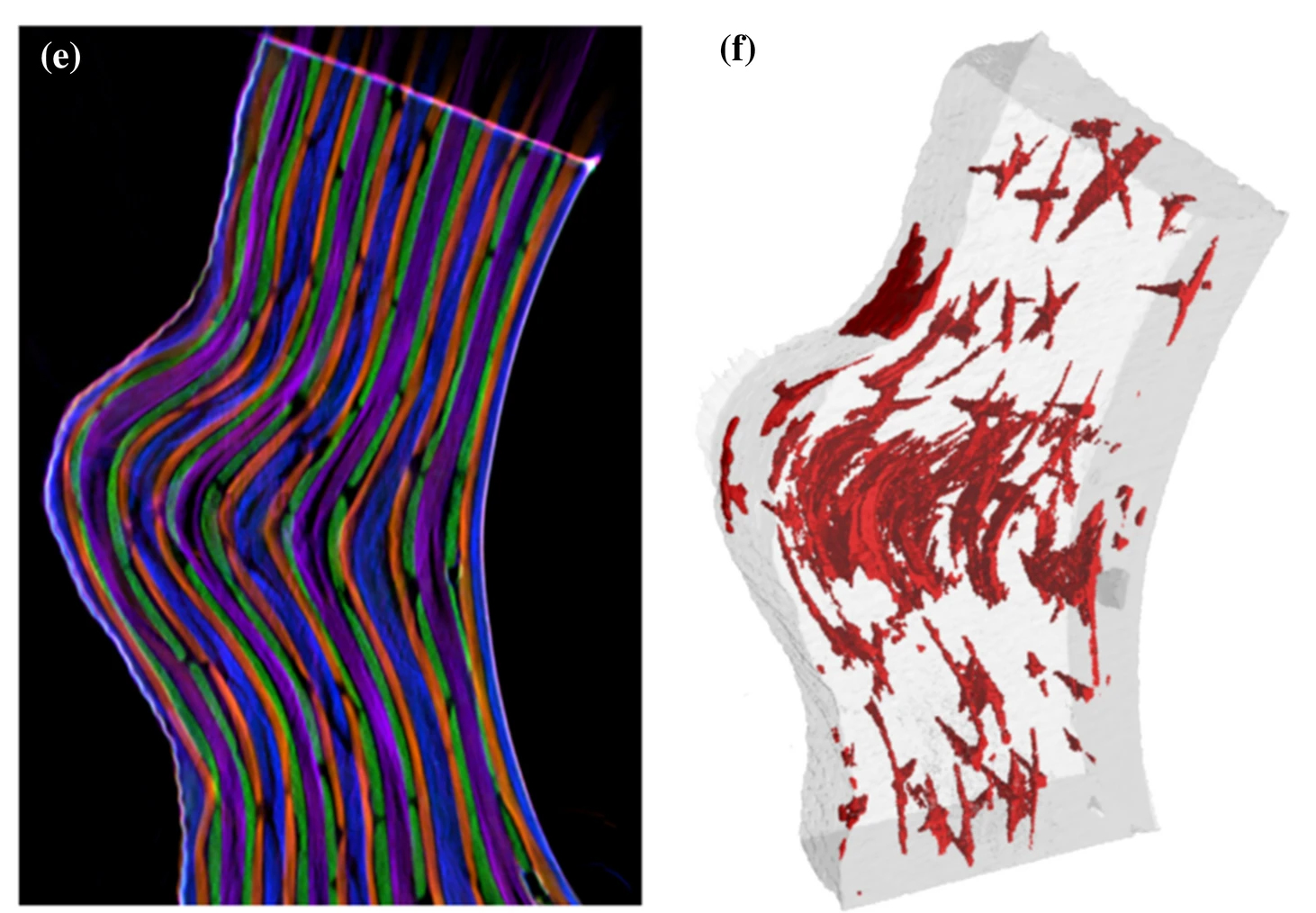
The high strength at moderate weight in combination with superior corrosion and fatigue properties makes carbon-fiber-reinforced polymer (CFRP) an attractive material for lightweight applications in aerospace. Nonetheless, besides several benefits, CFRP components also bear significant risks like a low resistance to impact damage. […] In this work, we present a multimodal approach to three-dimensionally quantify and visualize fiber orientation and resin-rich areas in carbon-fiber-reinf... Read more
Jonathan Glinz, Jan Šleichrt, Daniel Kytýř, Santhosh Ayalur-Karunakaran, Simon Zabler, Johann Kastner & Sascha Senck
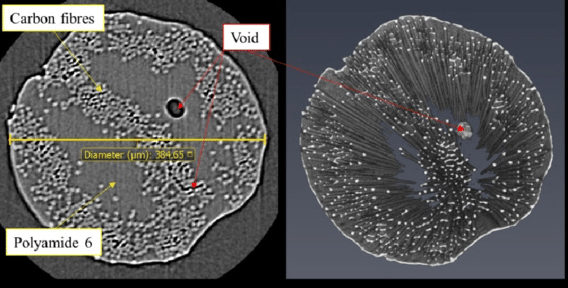
Continuous carbon fibre-reinforced polymer (CCFRP) composites have been increasingly used in airframes and other high-end industrial products due to their superior mechanical properties such as high strength-weight and stiffness-weight ratios […] Additive manufacturing (also known as 3D printing) has shown potential to fabricate continuous fibre-reinforced composites with highly complex shapes in both 2D and 3D. Among them, Fused Filament Fabrication (FFF) 3D printing melts and deposits... Read more
Haoqi Zhang, Jiayun Chen, Dongmin Yang
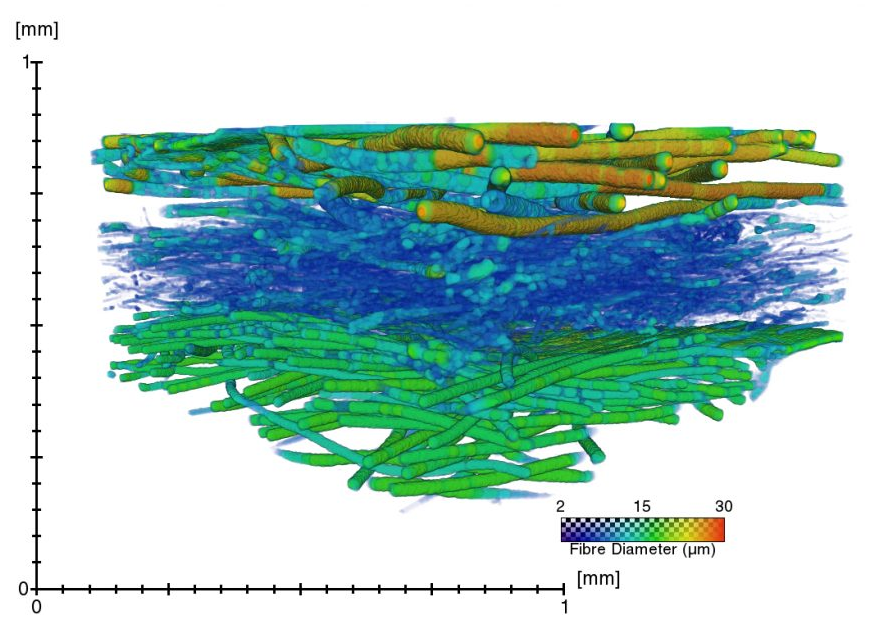
A virtual testing platform for filter materials and textile masks
In order to provide the population with consistent and science-based advice on preferred materials for face masks, we are characterizing the microstructure of different materials using X-ray microfocus computed tomography (microCT), and we use these datasets to simulate the pressure drop (i.e. measure for breathability). We validate our measurements with physically measured filter efficiency and pressure drop, and in this way, we try to develop a “virtual testing platform” for the charac... Read more
The ContrasTTeam of Prof. dr. Greet Kerckhofs, UCLouvain and MTM
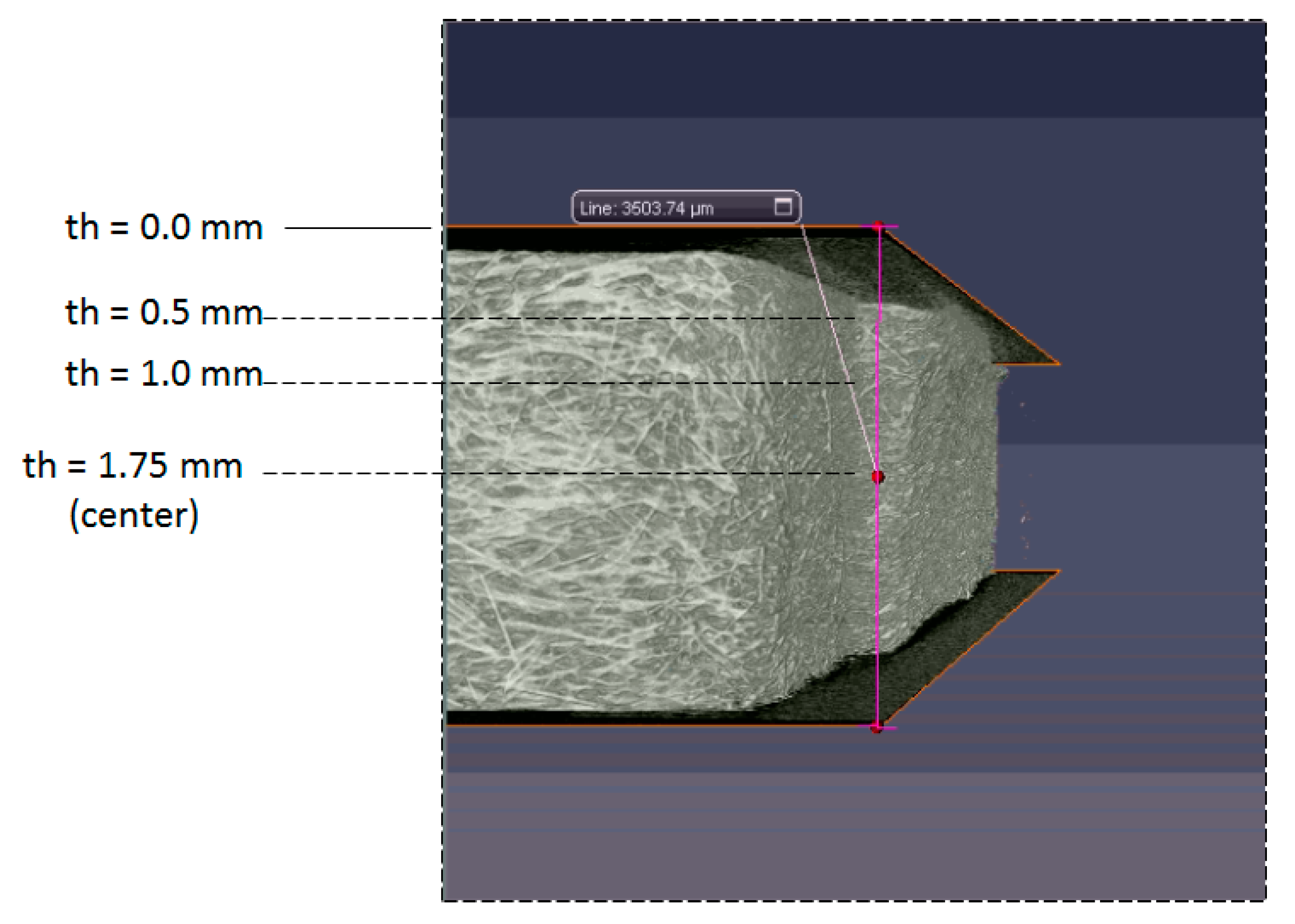
In recent years, due to the rapid development of industrial lightweight technology, composite materials based on fiber reinforced plastics (FRP) have been widely used in the industry. However, the environmental impact of the FRPs is higher each year. To overcome this impact, co-injection molding could be one of the good solutions. But how to make the suitable control on the skin/core ratio and how to manage the glass fiber orientation features are still significant challenges. In this study, ... Read more
Chao-Tsai Huang, Xuan-Wei Chen, Wei-Wen Fu
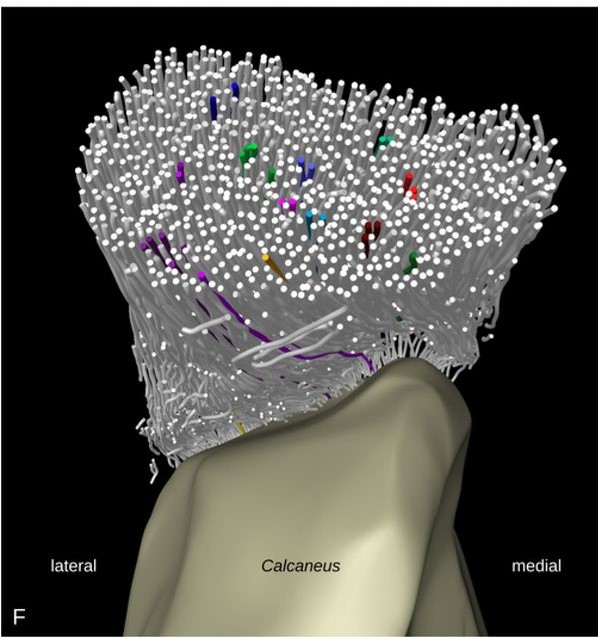
Tracking tendon fibers to their insertion – a 3D analysis of the Achilles tendon enthesis in mice
Tendon insertions to bone are heavily loaded transitions between soft and hard tissues. The fiber courses in the tendon have profound effects on the distribution of stress along and across the insertion. We tracked fibers of the Achilles tendon in mice in micro-computed tomographies and extracted virtual transversal sections. The fiber tracks and shapes were analyzed from a position in the free tendon to the insertion with regard to their mechanical consequences. The fiber number was found to... Read more
Julian Sartori, Heiko Stark
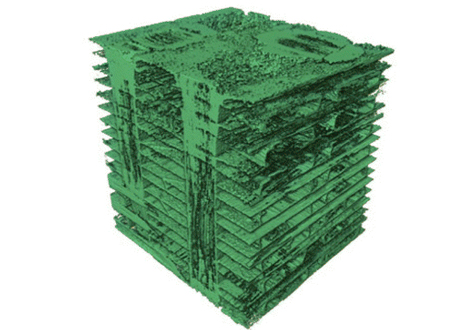
The microstructure morphologies have been characterized by high resolution laboratory X-ray computed tomography in Carbon Fiber Reinforced Carbon and Silicon Carbide (C/C-SiC) ceramic composites fabricated by Gaseous Silicon Infiltration (GSI) from C/C preforms of three different architectures: 3D stitched cloth fabric; 3D orthogonal woven fabric; and needled short-cut felt. Each composites’ microstructure was influenced by the structure of the C/C preform. By incorporating tomography with ... Read more
Fan Wan, Talha, J. Pirzada, Rongjun Liu, Yanfei Wang, Changrui Zhang, Thomas James Marrow
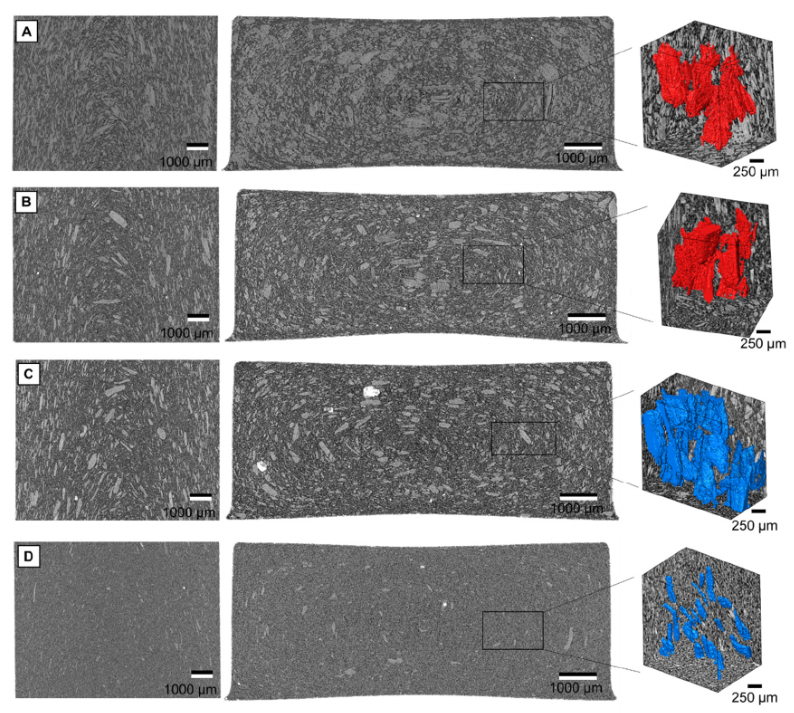
In this study, various wood material sources were used for the manufacture of wood-polymer composites (WPC). The materials were categorised as virgin wood particles (VWP), reprocessed WPC particles (RWP) and recycled thermoset composite particles (RCP) and derived from two virgin wood sources, three-layer particle boards, medium-density fibre boards (MDF) boards,or two different wood/polypropylene composites. All produced wood-polypropylene compounds contained 60% wood material and were manu... Read more
Kim Christian Krause, D, Philipp Sauerbier, Tim Koddenberg and Andreas Krause
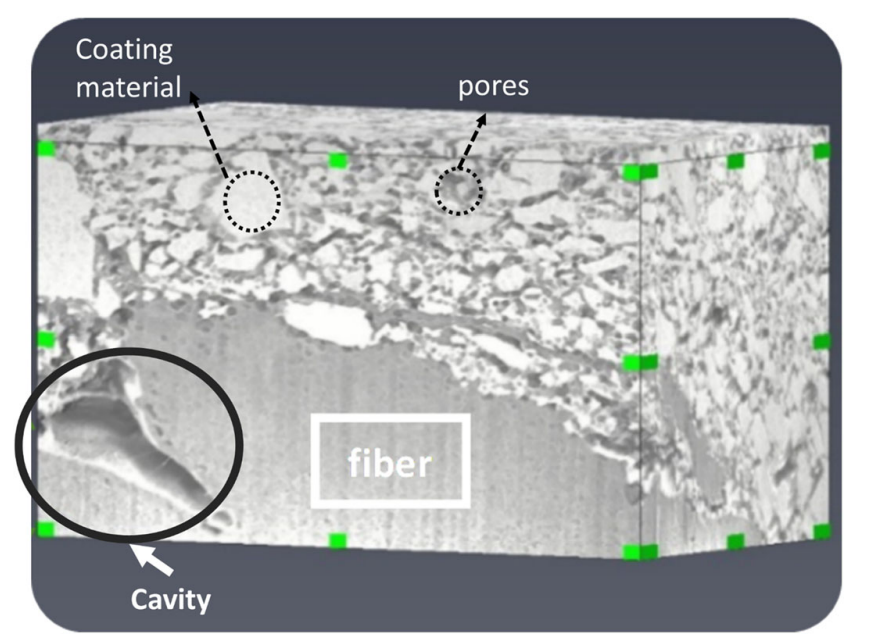
Characterization of the Interface Between Coating and Fibrous Layers of Paper
Coated paper is an example of a multi-layer porous medium, involving a coating layer along the two surfaces of the paper and a fibrous layer in the interior of the paper. The interface between these two media needs to be characterized in order to develop relevant modeling tools. After careful cutting of the paper, a cross section was imaged using focused ion beam scanning electron microscopy. The resulting image was analyzed to characterize the coating layer and its transition to the fibrous ... Read more
H. Aslannejad, S. M. Hassanizadeh, M. A. Celia
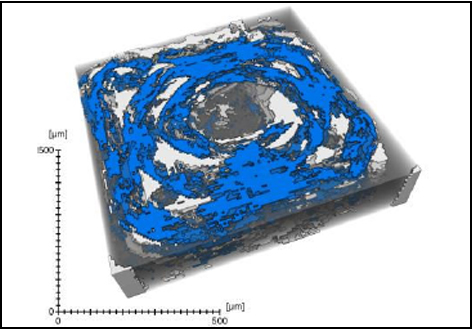
Defect detection in 3D printed carbon fibre composites using X-ray Computed Tomography
X-ray Computed Tomography (X-ray CT) has become a vital tool for product quality inspection. The X-ray CT analysis of 3D printed composites, with a layer-by-layer structure of carbon fibre/polyamide and polyamide plies, demonstrates how the void content increases with an increasing number of consecutive carbon fibre layers. Not only the void content, but also the pore
network complexity increases, as more pore types are introduced into the sample. The PolyAmide (PA) matrix has an averag... Read more
Jeroen Soete1, Brice Badoux, Yentl Swolfs, Larissa Gorbatikh, Martine Wevers
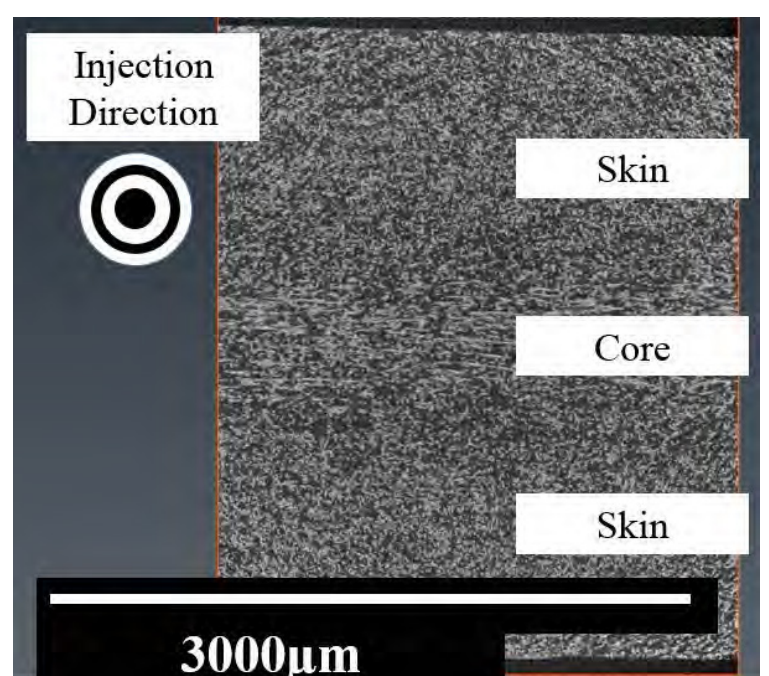
For many years, SFRPs (short fibre reinforced polyamides) have been used in the automotive industry as a means to reduce vehicle weight. However, their complex anisotropic and heterogeneous microstructure requires sophisticated material characterisation and simulation. This study aims at presenting the simulation strategy adopted by an automotive company address these challenges. The manufacturing process is first simulated and correlated with tomography analysis. Then, based on the numerical... Read more
Pablo Wilson, Peter Heyes
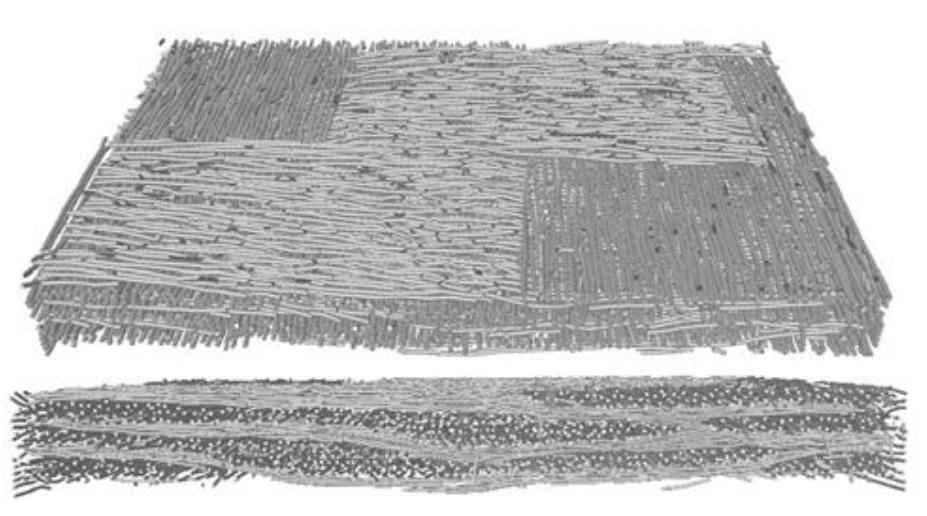
The paper proposes a new experimental methodology, based on ultrasonic measurements, that aims at evaluating the anisotropic damage in woven semi-crystalline polymer composites through new damage indicators. Due to their microstructure, woven composite materials are characterized by an anisotropic evolution of damage induced by different damage mechanisms occurring at the micro or mesoscopic scales. In this work, these damage modes in polyamide 6.6/6-woven glass fiber reinforced composites ha... Read more
Pascal Pomarède, Fodil Meraghni, Laurent Peltier, Stéphane Delalande, Nico F. Declercq